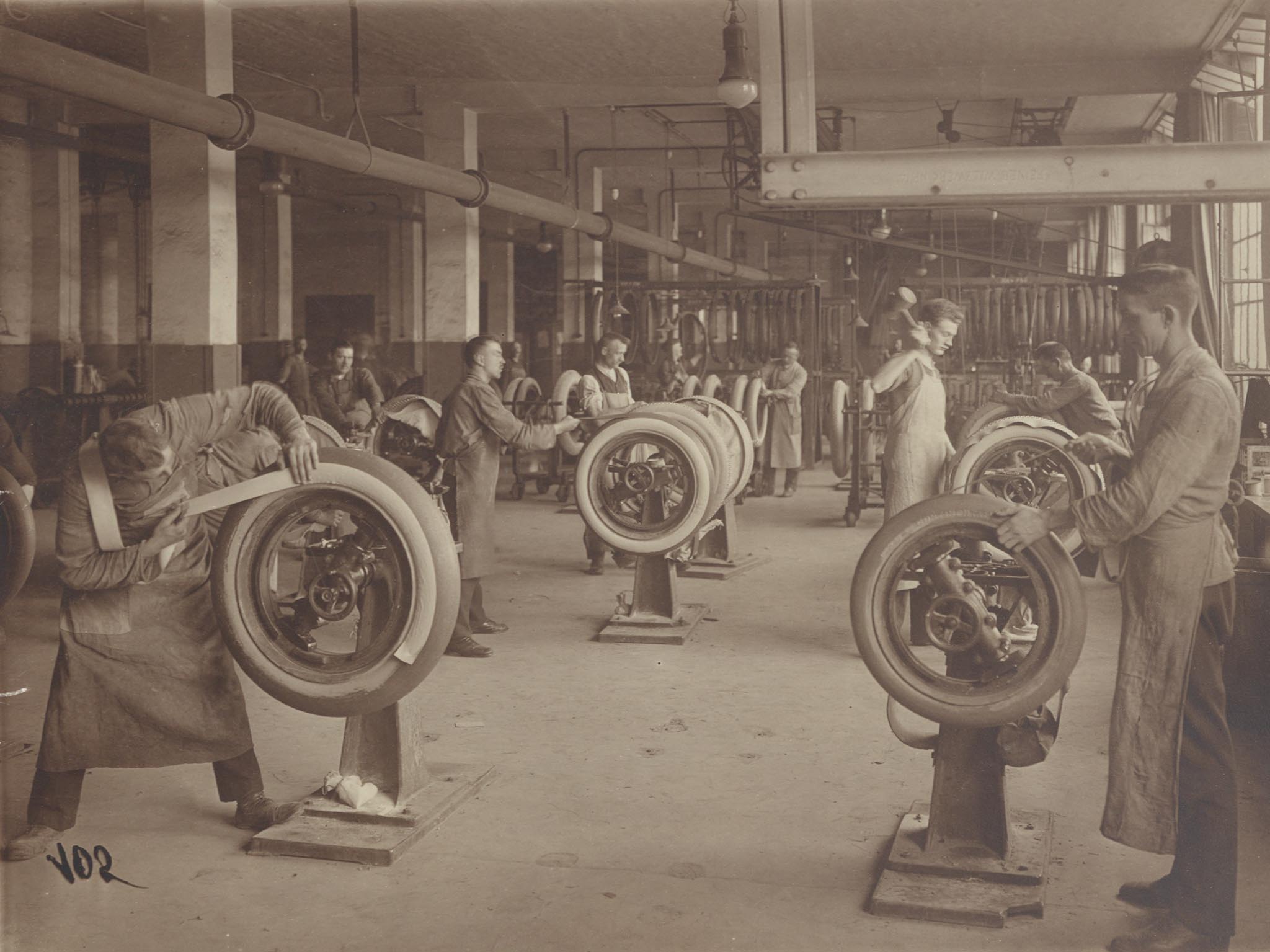
Již více než 150 let se věnujeme pneumatikám
Společnost Continental má dlouhou a úspěšnou historii sahající až do roku 1871, kdy byla založena v německém Hannoveru. Kdekoli se lidé snaží převést své nápady týkající se mobility do praxe, jsme připraveni je v jejich úsilí podpořit. Jedná se o společnou nit vinoucí se každou érou naší historie. Naše technologie, systémy a řešení v oblasti služeb přispívají k zajištění udržitelnější, bezpečnější, pohodlnější, přizpůsobenější a dostupnější mobility a dopravy.
Protože se toho za dobu naší existence událo opravdu hodně, nabízíme zde shrnutí nejdůležitějších fází našich 150 let inovací a pokroku – a také lákavý pohled do budoucnosti.
Cesta k udržitelnosti (od roku 1991 až po současnost)
2021
Společnost Continental se chce stát nejpokrokovější pneumatikářskou společností na světě. Conti GreenConcept podtrhuje náš závazek stát se do roku 2030 lídrem v oblasti ekologické a sociální odpovědnosti.
2018
Experimentální laboratoř "Taraxagum Lab" provádí průkopnický výzkum pěstování a zpracování ruských pampelišek jako alternativního zdroje suroviny ke kaučukovníku, což představuje velký pokrok v ekologické výrobě pneumatik.
ContiConnect, digitální platforma společnosti Continental pro monitorování pneumatik, pomáhá zvýšit efektivitu, udržitelnost a dobrou údržbu komerčních vozových parků.
2013
ContiLifeCycle využívá zcela jedinečnou kombinaci recyklace pryže a protektorování nákladních pneumatik Continental. Toto udržitelné řešení prodlužuje životnost pneumatik a zároveň výrazně snižuje náklady.

2007
Společnost Continental se stává jedním z pěti největších dodavatelů v automobilovém průmyslu na světě.
2003
Je představena ContiSportContact 2 Vmax, první silniční pneumatika na světě schválená pro rychlost až 360 km/h, která je později uznána Guinnessovou knihou rekordů jako nejrychlejší silniční pneumatika na světě.
1991
Pneumatika ContiEcoContact dokazuje, že udržitelnost nemusí být na úkor výkonu nebo bezpečnosti. Její nižší valivý odpor snižuje spotřebu paliva nebo dojezd vozidla, vydrží déle a zanechává na asfaltu méně zbytků gumy.
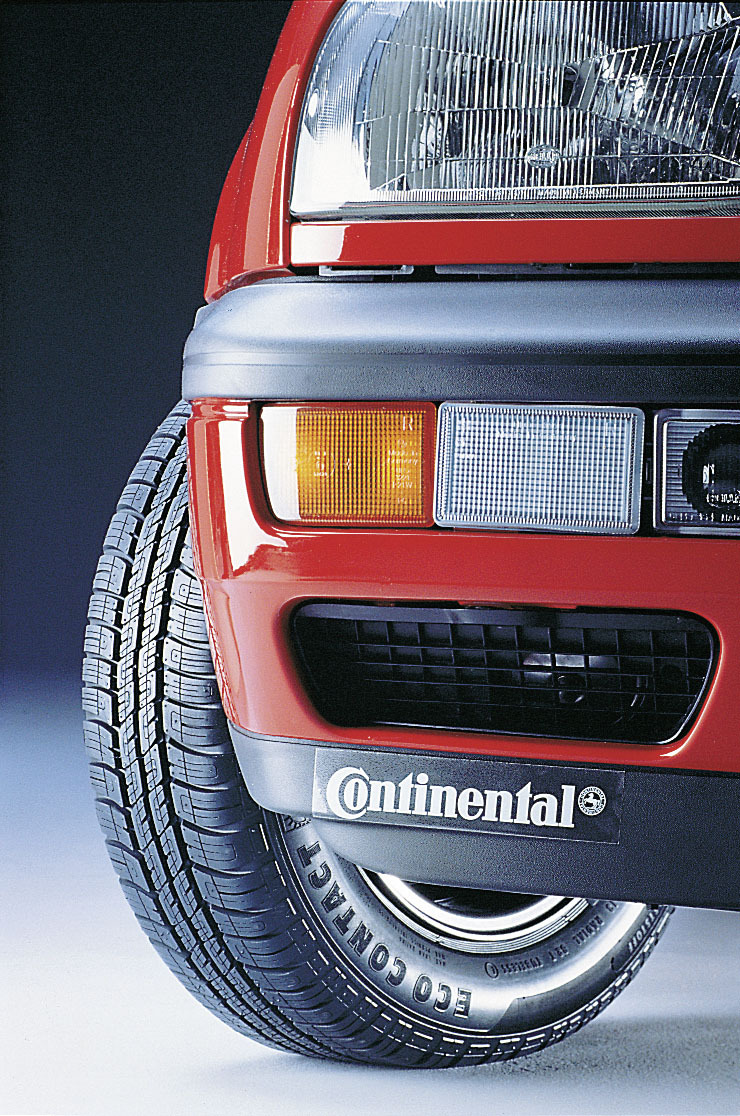
Okamžiky v čase: Umění reklamy
Zlatý věk dopravy a mobility se stal inspirací pro další nově vznikající uměleckou formu: reklamu. Archivy společnosti Continental uchovávají úžasnou sbírku malovaných plakátů, které odrážejí nejen kvality našich výrobků, ale také touhy našich zákazníků.
Ať už se jednalo o výkon, bezpečnost nebo jen o půvab cestování do exotických míst, v těchto barevných snímcích kulturní historie je toho spousta, co si můžete vychutnat.
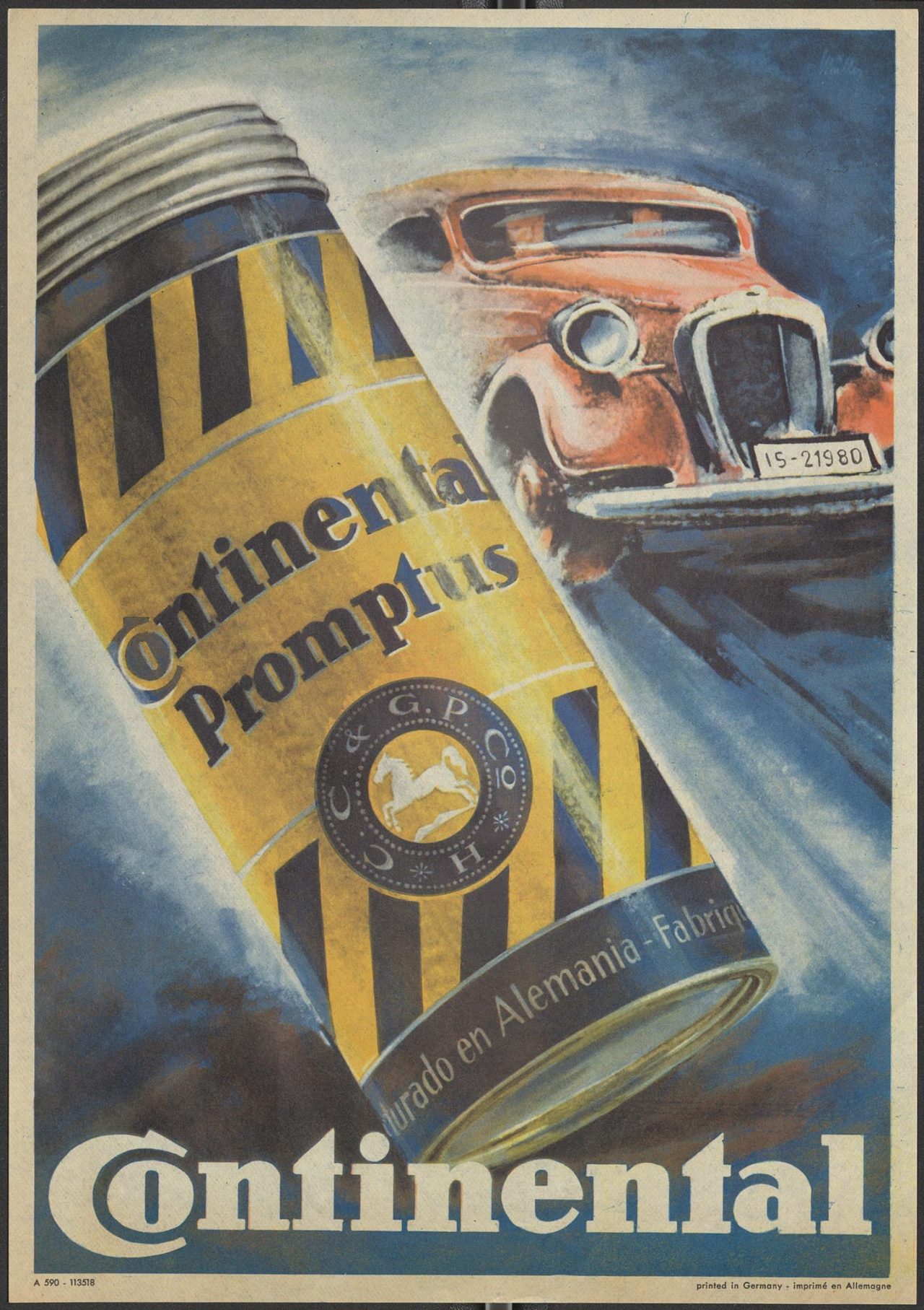

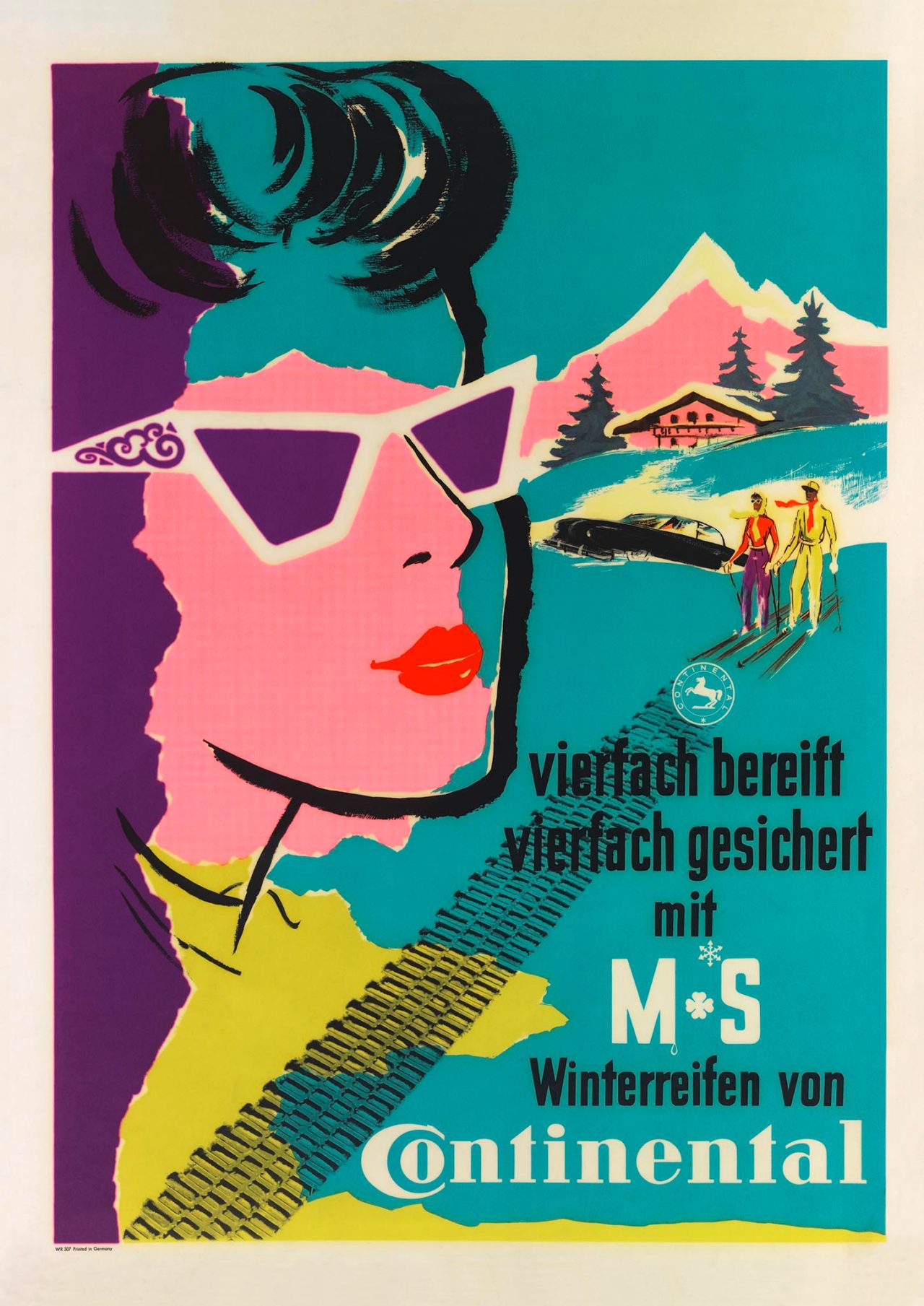

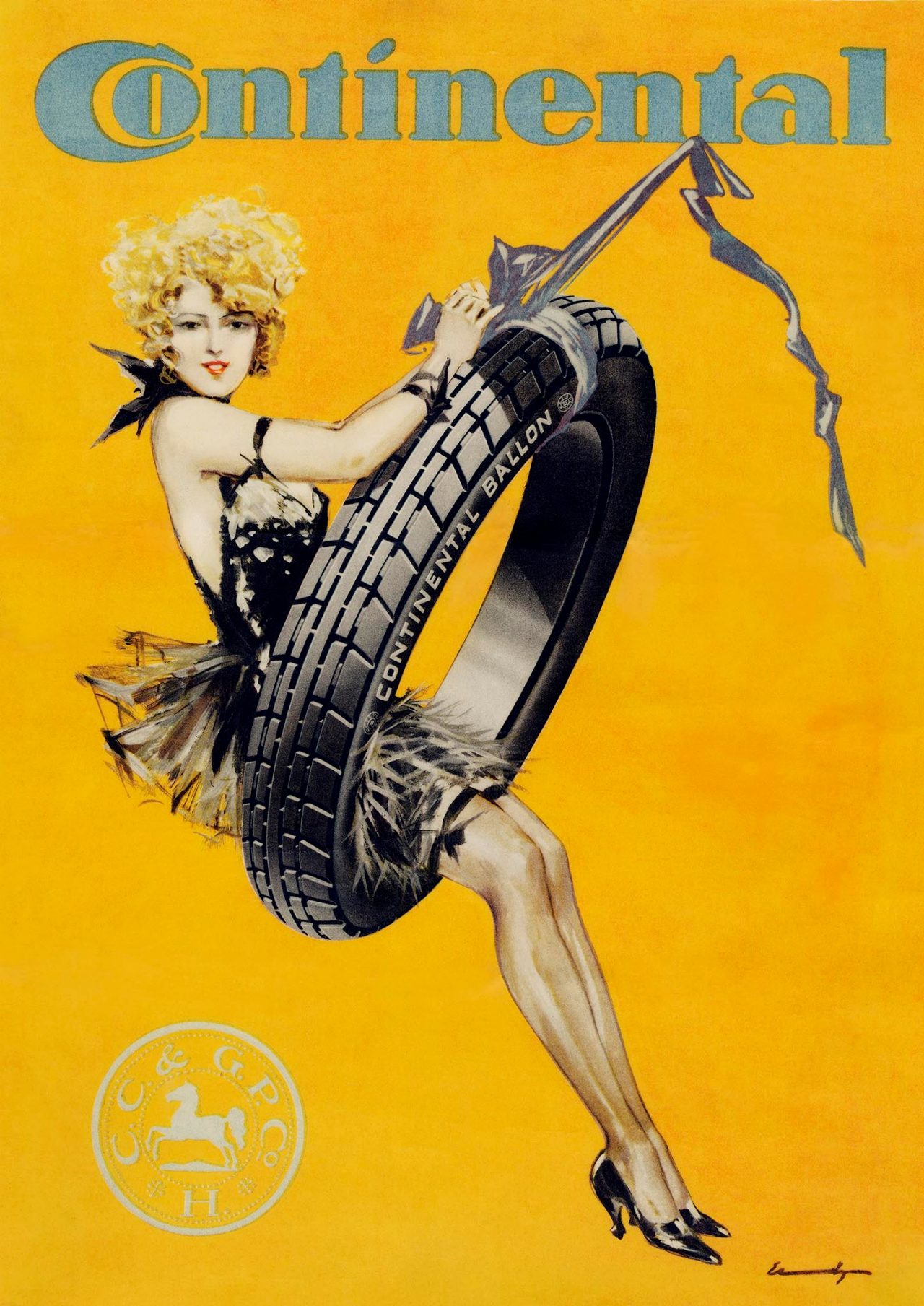
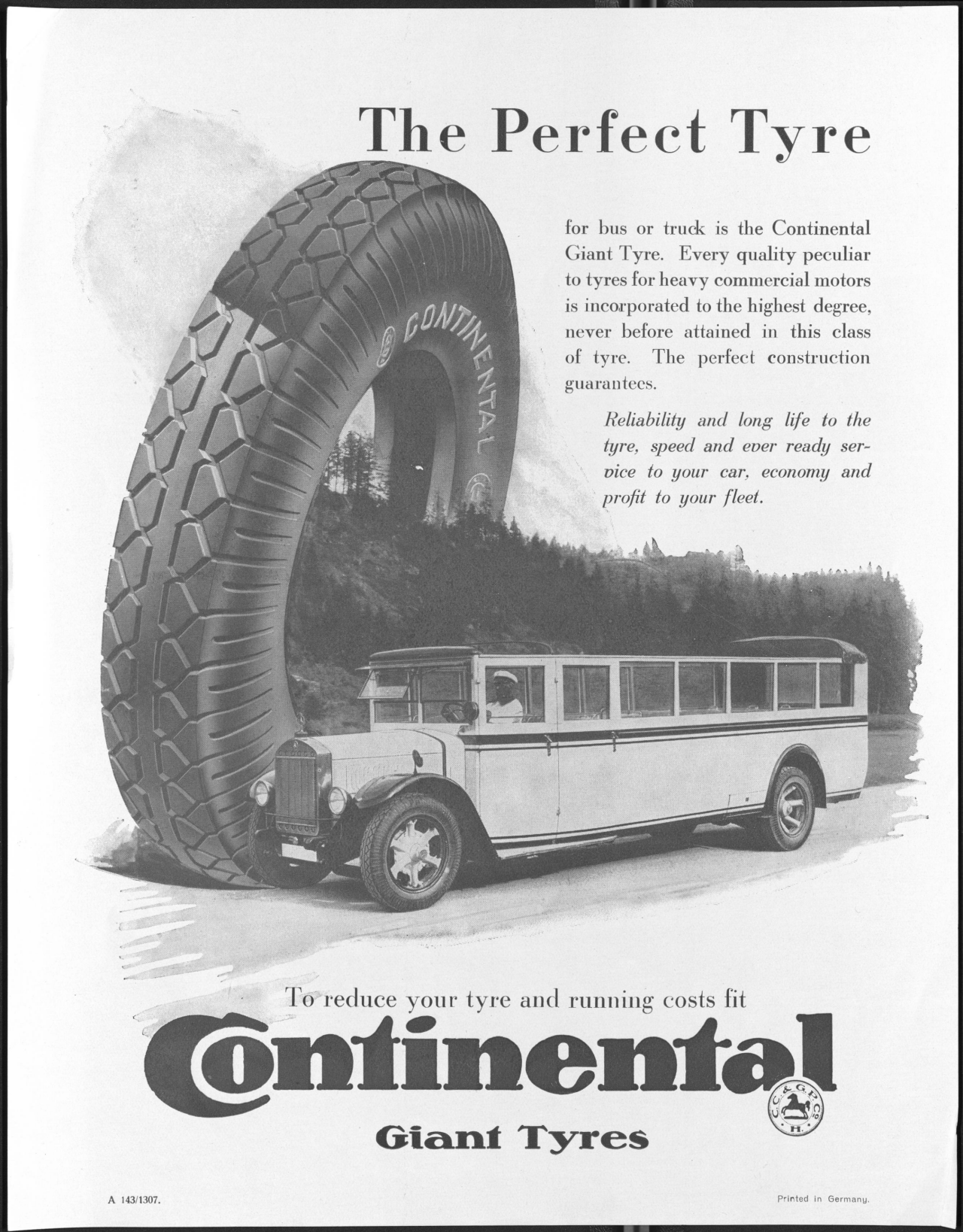
- 1
- 2
- 3
- 4
- 5
- 6
Internacionalizace (1961 - 1990)
1987
Založení společnosti Continental Tire North America, Inc.
1979
Společnost Continental přebírá evropské pneumatikářské aktivity společnosti Uniroyal a rozšiřuje tak svou základnu v Evropě. O šest let později přebírá také pneumatikářské aktivity rakouské společnosti Semperit.
1972
Zimní pneumatika ContiContact bez hrotů výrazně zvyšuje bezpečnost na silnicích v náročných sezónních podmínkách.
1967
Otevření testovacího okruhu pneumatik Contidrom. Toto specializované zkušební centrum pomáhá držet krok s dynamickým vývojem světové automobilové výroby.

Důležitý moment: První auto bez řidiče
V roce 1968 vyjel na trať našeho testovacího zařízení Contidrom k úžasu tisku i veřejnosti první elektronicky řízený vůz bez řidiče. Cílem tohoto vizionářského projektu bylo zjistit, jak lze přesně testovat pneumatiky pomocí vědeckých metod za naprogramovaných podmínek. Inženýři společnosti Continental tak vlastně připravovali půdu pro budoucnost autonomního řízení.
Společnost Continental dnes pokračuje v práci na nových technologiích pro podporu autonomního řízení. V současné době je na uzavřených testovacích tratích v provozu CUbE - "Continental Urban Mobility Experience" - který lze aktivovat pomocí aplikace v chytrém telefonu a bezpečně přepravit cestující do cíle, který si sami zvolí. Další vývojáři zase testují možnosti automatizovaných jízd po dálnici a automatické navigace v garáži.
Společnost Continental samozřejmě vyvíjí také inteligentní pneumatiky, které jsou vhodné pro tuto novou generaci inteligentních vozidel. Prototyp Continental C.A.R.E™ má senzory, které sledují tlak v pneumatikách, teplotu a upozorňují na případné poškození. Ráfky této pneumatiky jsou vybaveny vzduchovými čerpadly, která mohou během jízdy upravovat tlak v pneumatice.
Naše úspěchy (1931 - 1960)
1960
Continental začíná sériově vyrábět radiální pneumatiky a zavádí pro jejich označení písmeno "R", které se následně stává standardem po celém světě.
1955
Continental je první německou společností, která začala vyrábět bezdušové pneumatiky pro osobní automobily, jejichž spolehlivost je ve srovnání s tradičními pneumatikami výrazně vyšší.
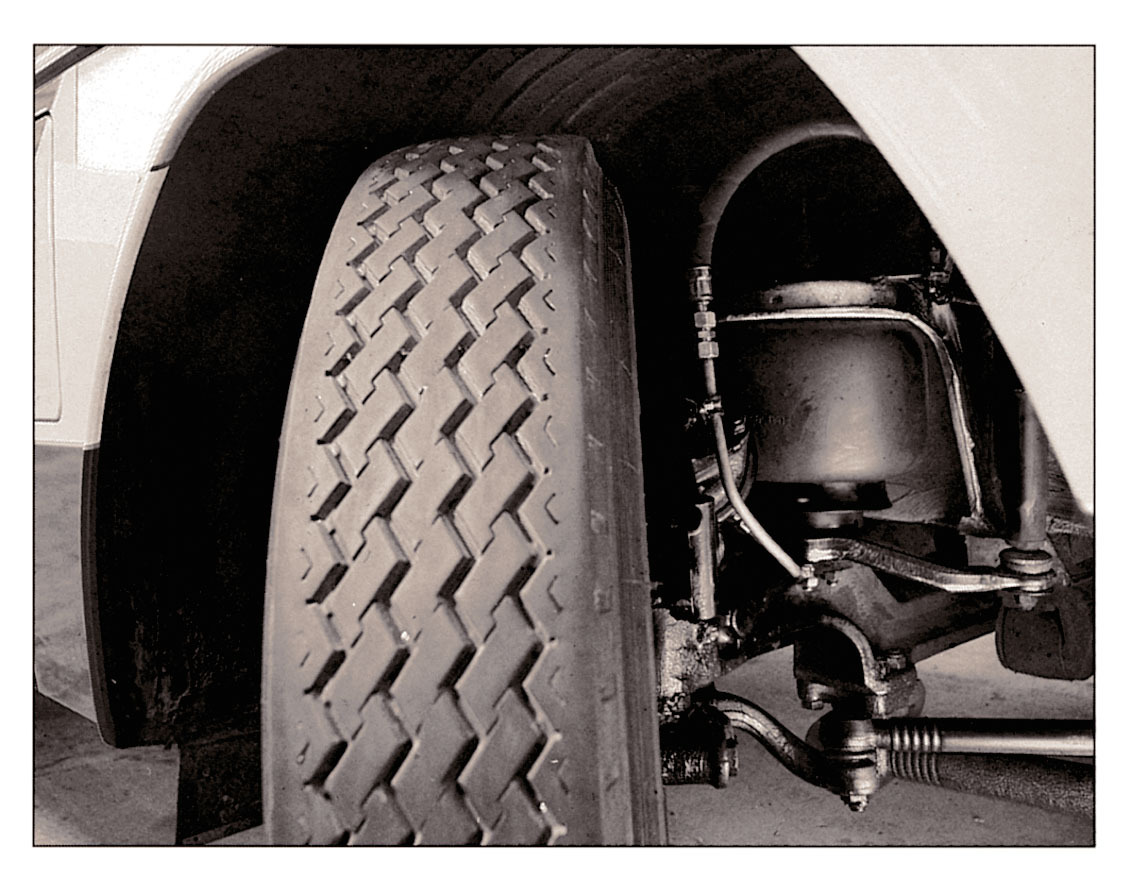
1952
Společnost Continental nabízí první pneumatiky v Evropě určené speciálně pro zimní a mrazivé podmínky, které nesou označení М+S (Mud and Snow).
1951-1955
V úzké spolupráci se společnostmi Daimler-Benz a Porsche opakuje Continental své předválečné úspěchy na závodních tratích s vysokorychlostními pneumatikami Continental.
1945
Po skončení války britská vojenská správa povoluje továrnám v Hannoveru obnovit výrobu.
Continental během 2. světové války
1939-1945
Po vypuknutí druhé světové války je výroba pneumatik a pryže přísně regulována, aby byly splněny vojenské požadavky na pneumatiky pro nákladní automobily a letadla a na výrobu oděvů, obuvi a dalších potřeb. Stejně jako mnoho průmyslových provozů v Německu v té době využívá společnost Continental nucené pracovní síly poskytované "Třetí říší". Této ostudné epizody hluboce litujeme, více se o ní dočteme v historické studii zveřejněné v roce 2020.
Vynalézaví průkopníci (1901 - 1930)
1928
Společnost Continental vyrábí první evropskou pneumatiku pro zemědělské účely.
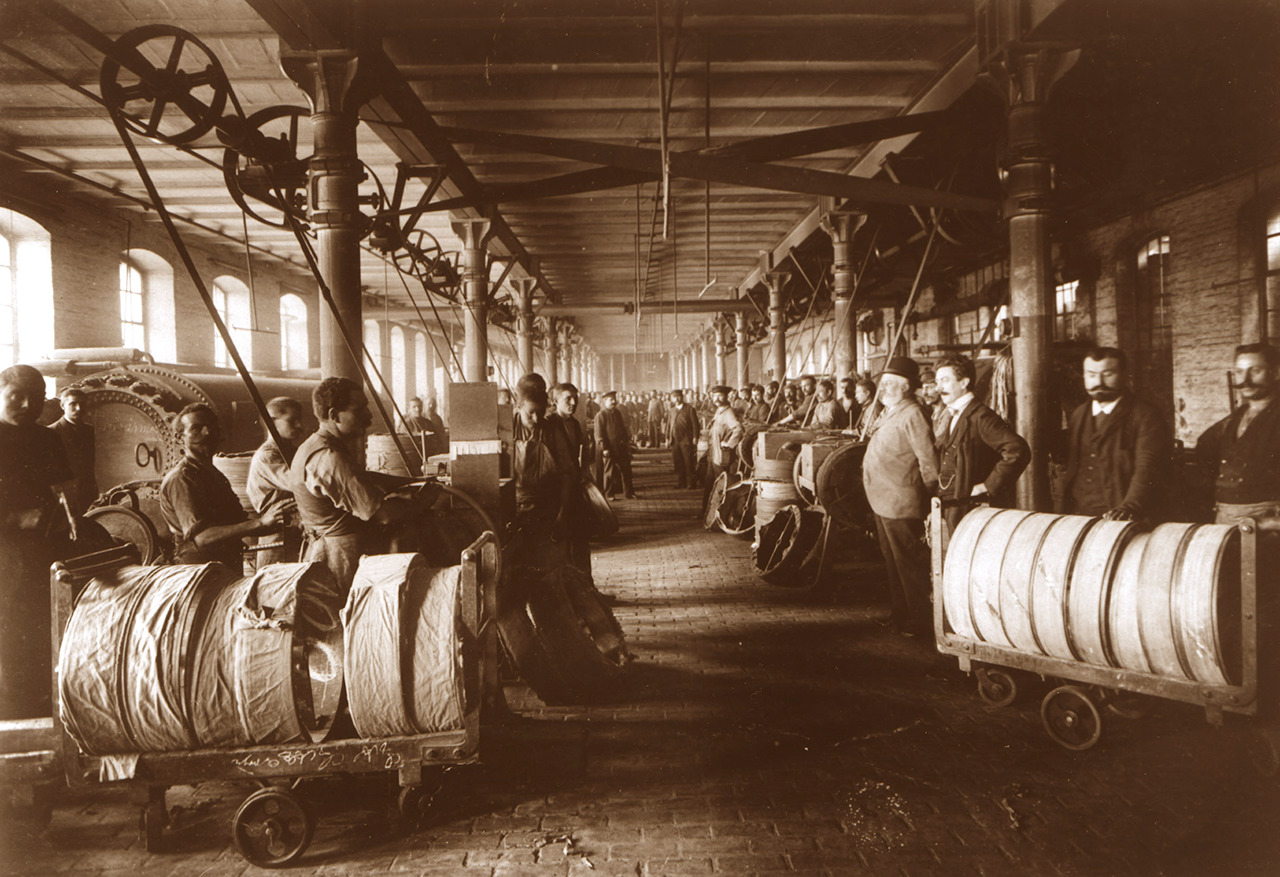
1926
Uhlíková čerň se používá při výrobě pneumatik jako výztužné plnivo, které dodává pneumatice větší odolnost proti opotřebení a stárnutí a také její charakteristickou barvu.
1921
Continental je první německou společností, která uvádí na trh kordovou pneumatiku, jež představuje výrazný pokrok oproti původní tužší lněné tkanině.
1909
Letecký průkopník Louis Blériot se zapisuje do historie prvním přeletem kanálu La Manche. Křídla a trup jeho letadla jsou potaženy materiálem Continental Aeroplan.
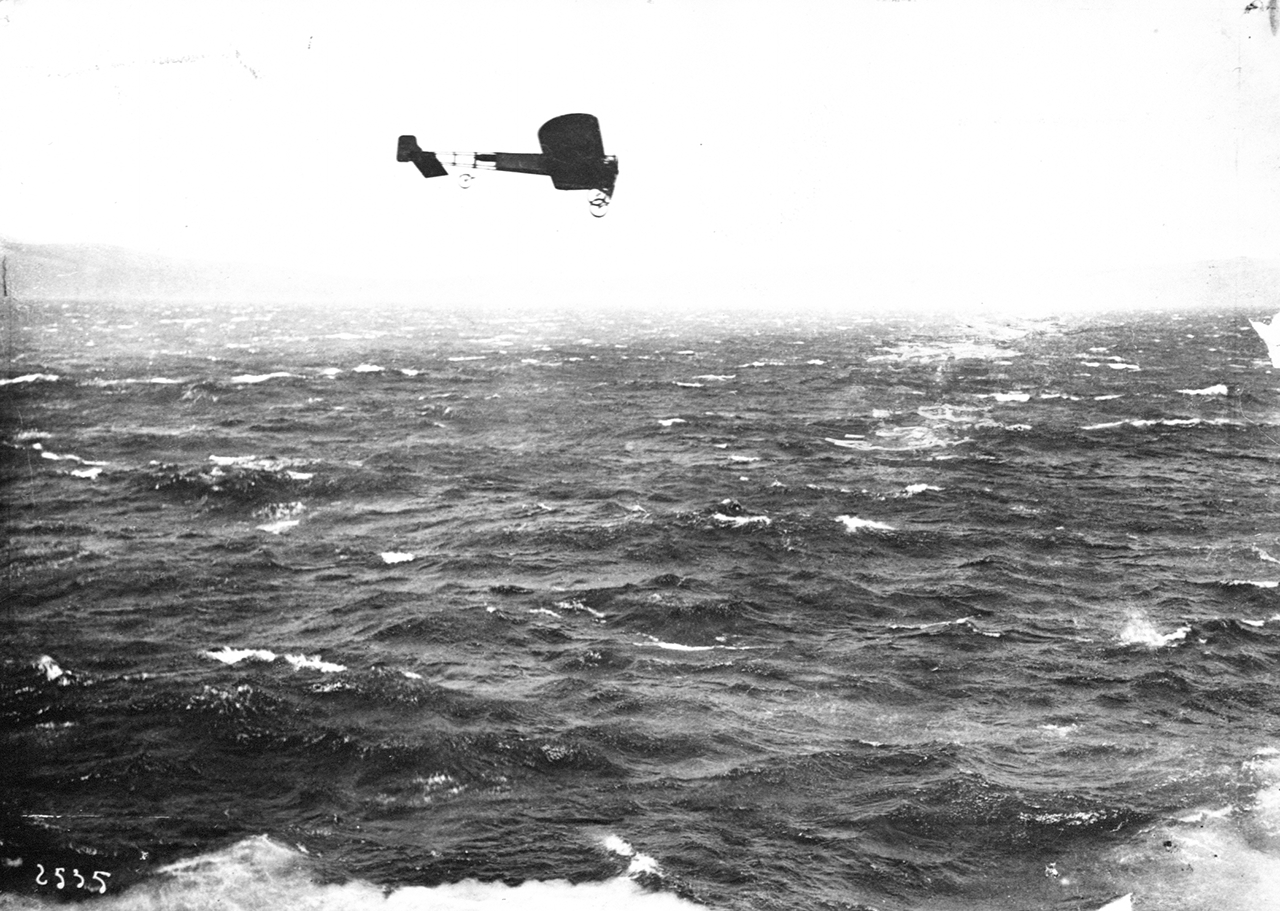
1908
Společnost Continental vynalezla odnímatelný ráfek, aby se výměna pneumatik usnadnila a zabrala tak méně času.
1901
25. března je Mercedes poprvé vybaven pneumatikami Continental. Dosáhne senzačního vítězství v automobilovém závodě Nice-Salon-Nice, když 414 km dlouhou trať ujede za 6 hodin 45 minut a 48 sekund.
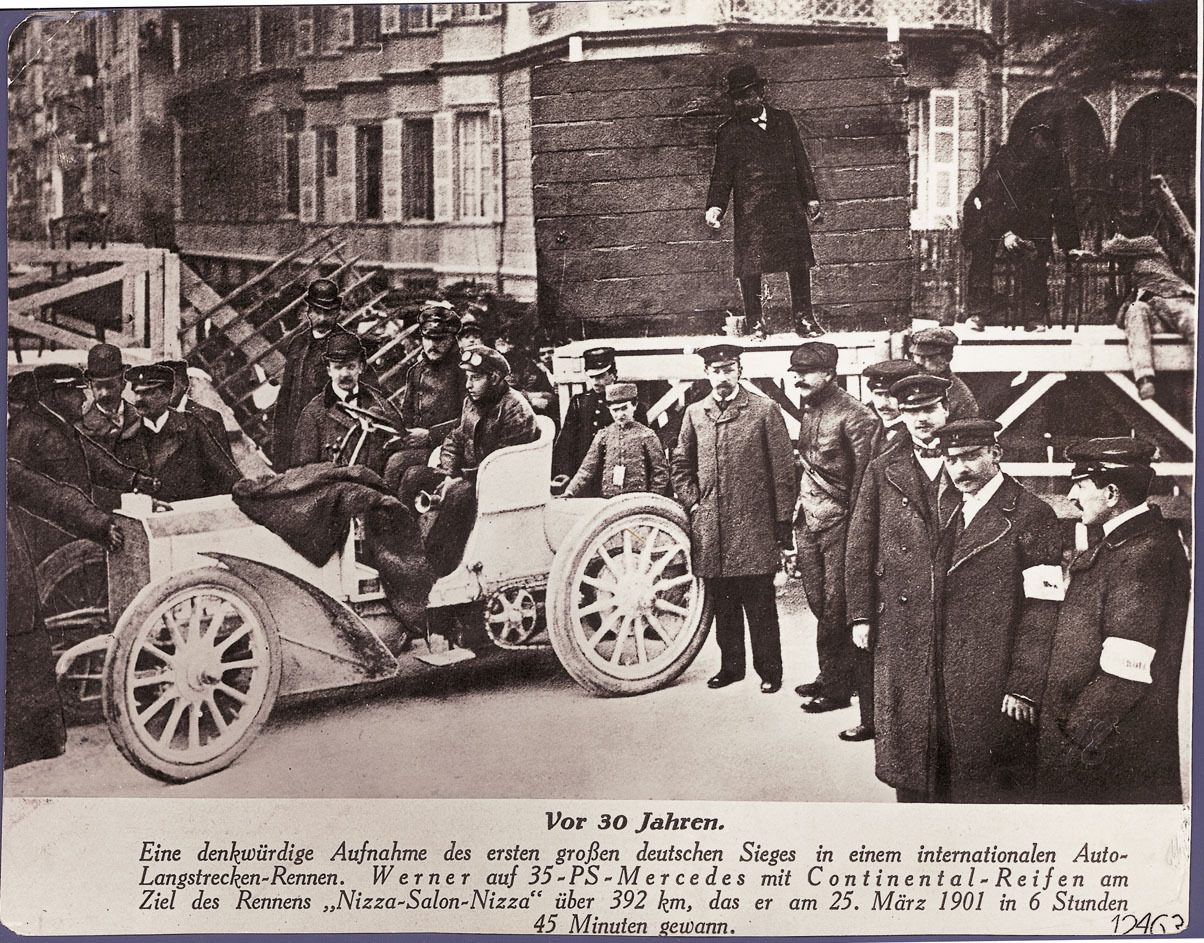
V duchu optimismu (1871-1900)
1892
Continental se stává první německou společností, která vyrábí pneumatiky pro jízdní kola.
1875
Na výrobcích Continental se poprvé objevuje obrázek vzpínajícího se koně, který je v roce 1882 oficiálně přijat jako ochranná známka společnosti.
1871
8. října je v Hannoveru založena společnost Continental Caoutchouc & Gutta-Percha, deset a půl roku před výrobou prvního automobilu. Její produkce zahrnuje pogumované tkaniny pro pláštěnky, termofory a pevné pneumatiky pro jízdní kola a kočáry. Hannover je rušné průmyslové centrum se strojírenskými závody, tkalcovnami a textilkami, a dokonce i luxusními čokoládovnami. Již v roce 1843 bylo město spojeno se zbytkem Německa přímou železniční tratí.
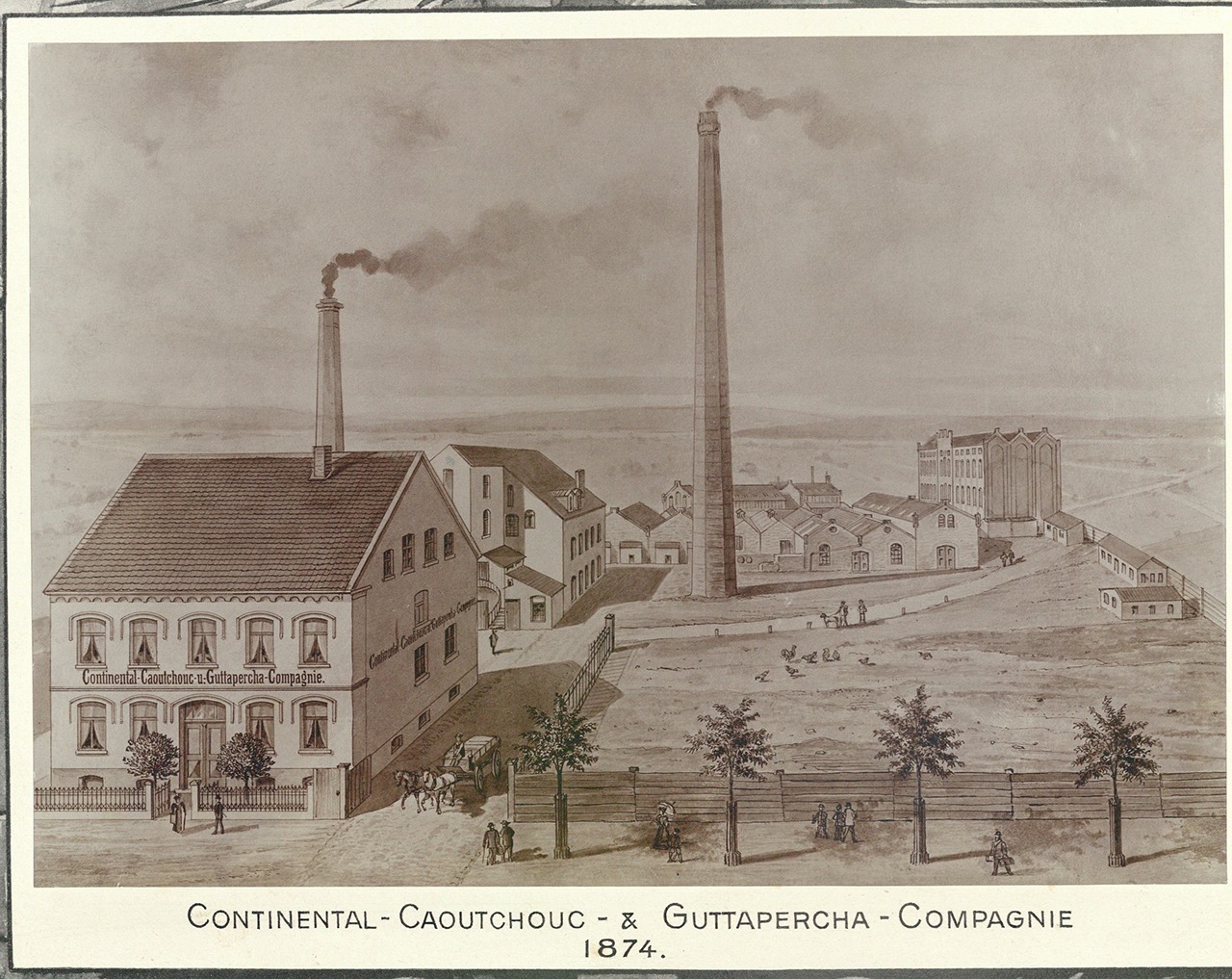
Důležitý moment: Logo Continental
Vzpínající se kůň je jednou z nejznámějších ochranných známek v automobilovém průmyslu, která symbolizuje sílu, hbitost a vytrvalost. V průběhu let měl několik podob, ale jak a proč se stal synonymem pro pneumatiky Continental?
Poprvé se objevil díky veterináři Hartmannovi, který vynalezl "chrániče kopyt" z měkké gumy, které měly zabránit uklouznutí koně na zledovatělém povrchu. Vynález si nechal patentovat, přičemž společnost Continental jej vyráběla a distribuovala. Na každém kusu byl vyobrazen vzpínající se kůň.
Širší význam koně však vychází z kořenů společnosti v německém Hannoveru, stejný plnokrevný dostihový kůň je v tomto regionu tradičním symbolem. Poprvé se objevil na erbu vévodů brunšvicko-lüneburských ve 14. století a dodnes se používá v německé spolkové zemi Dolní Sasko.

Výhled do budoucnosti
Budoucnost mobility je zelená, uhlíkově neutrální a šetrná k životnímu prostředí. Společnost Continental, která je vždy na špici trendů, si stanovila ambiciózní cíle v oblasti udržitelnosti a podniká konkrétní kroky k jejich dosažení. Pneumatika Continental GreenConcept je ztělesněním všech těchto úchvatných inovací, které jsou hnací silou této změny.
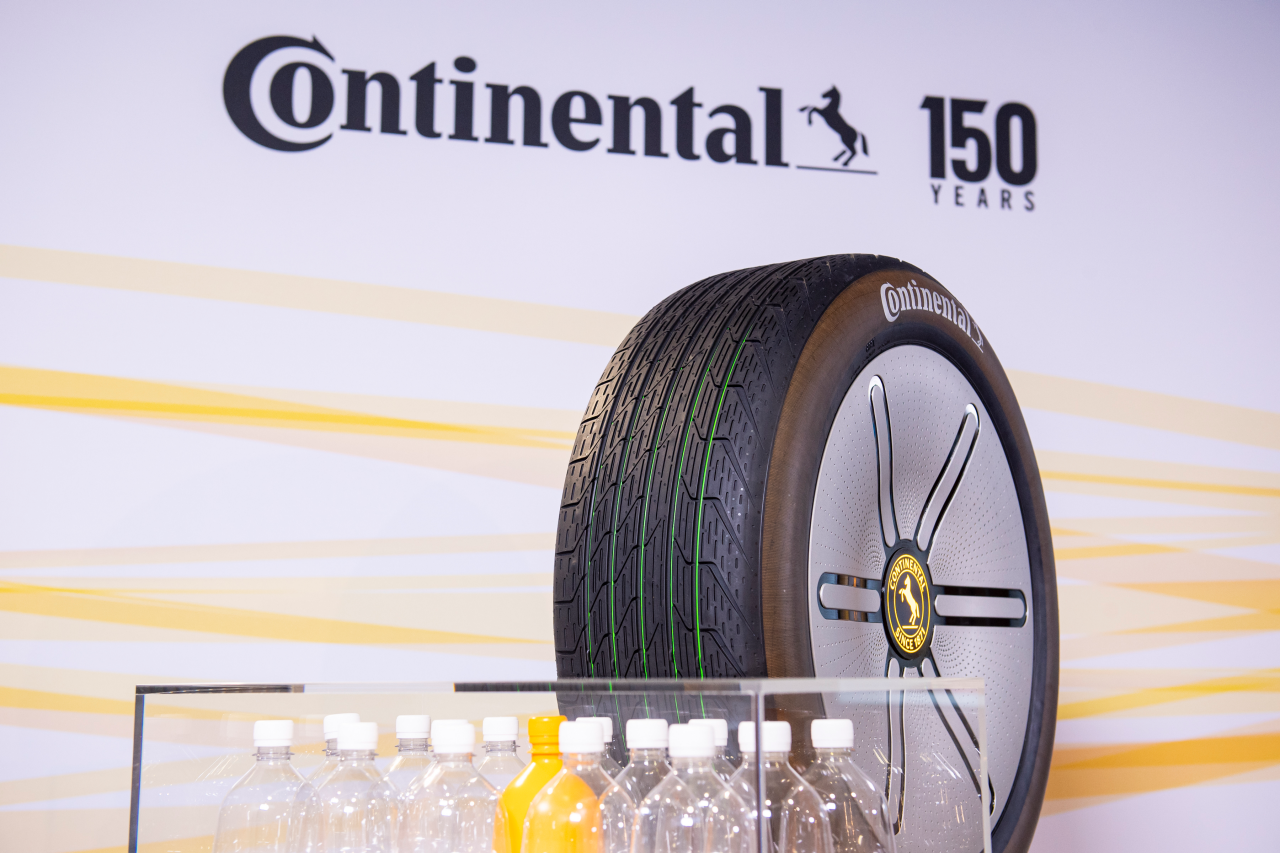
Pneumatika, která byla představena na veletrhu IAA Mobility 2021, v sobě spojuje řadu prvků, jejichž cílem je snížit dopad pneumatiky na životní prostředí. Některé z nich společnost Continental zavedla jako první a již je používá v současných produktech, jiné jsou teprve ve fázi vývoje nebo testování. Pneumatika GreenConcept je vyrobena z obnovitelných surovin, jako je přírodní kaučuk z pampelišek, silikát z popela z rýžových slupek a také rostlinné oleje a pryskyřice. Obsahuje vysoký podíl recyklovaných materiálů, přičemž se znovu využívá vše od PET lahví až po pryž z opotřebovaných pneumatik, aby se snížilo množství primárních surovin potřebných k výrobě pneumatik. Každý aspekt konstrukce pneumatiky byl optimalizován, takže je až o 40 % lehčí než dnešní standardní pneumatiky. Její běhoun lze obnovovat a je vybavena inteligentními senzory, díky nimž bude jízda bezpečnější, pohodlnější a efektivnější.
Související obsah
Objev sortiment
pneumatik Continental

